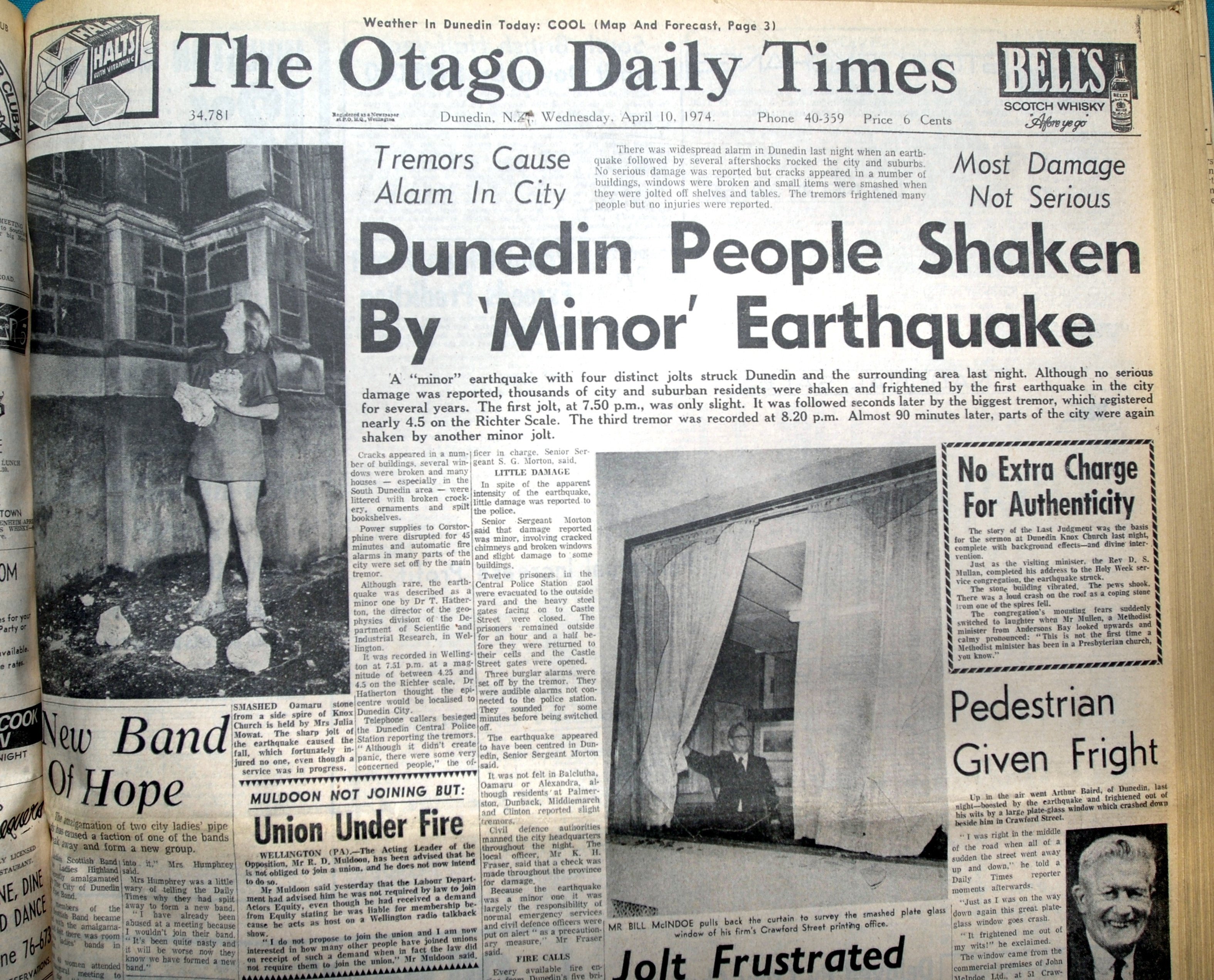
On April 9, 1974, Dunedin was shaken by a 4.9 magnitude earthquake, causing more than $3.5 million in damage in today’s money, mainly in fallen chimneys and masonry.
Admittedly, it had nothing on the upheavals of the more recent earthquakes in Christchurch, greater Canterbury or Kaikōura, but was a reminder there are fault lines all over the South Island.
University of Otago geology department researcher Dr Jack Williams said although the magnitude was "minor" compared to the September 2010 and February 2011 earthquakes in Canterbury, there were other ways to measure it.
"In terms of its intensity, which is the ground shaking, the earthquake was about eight on the Modified Mercalli (MM) scale, with one representing the weakest of shaking, through to 12 representing almost complete destruction.
"The claims for the property damage were reasonably significant because of its closeness to Dunedin and South Dunedin.
"It means there is nowhere in New Zealand that is safe from an earthquake."
"We don’t want to be where Christchurch was pre-2010, where there was a bit of a perception they were safe."

"It might not cause any casualties in Dunedin, but there would be a lot of resources used in the aftermath, and a lot of disruption.
"A lot of things up and down the South Island will be shut down."
He has been studying several faults near Dunedin.
These include the magnitude 7 7.4km Akatore Fault, which is about 15km south of Dunedin.
"There have been three earthquakes in the past 10,000 years, and two within the last 2000 years.
"In geology terms, these are reasonably frequent occurrences.
"It means the fault could go tomorrow, or it could not happen again for another 1000 years.
Tomorrow, at the Hutton Theatre, the university will host an information evening to commemorate the 50th anniversary of the 1974 Dunedin earthquake.
It will include representatives from the university, GNS and the city council.
Associate Prof Caroline Orchiston, of the Centre for Sustainability, is helping organise the event.
She says the anniversary was the opportunity to get the public "thinking about earthquakes again".
"Civil defence emergency management do a lot of work on community response plans, but it’s also about knowing your neighbours, and working out ways to share resources in the event an earthquake happens.
"We need to learn lessons from the Christchurch experience — it took a previously undiscovered fault to cause all that damage.
An Earthquake Commission spokesman told the ODT there had been several "minor" events affecting Dunedin in the past couple of decades.
"We settled around 200 dwelling damage claims in Dunedin for the August 22, 2003 Fiordland event.
"There have also been a number of other smaller-impact events which caused damage for we have settled, though not to the same degree, such as other Fiordland events in 2007 and 2009."

There was also a 4.7 magnitude event near Dunedin in June 2015, for which the EQC settled about 100 dwelling damage claims.
Otago University science and communications student Rhys Latton’s short film about the earthquake will also screen at the event.
"I was lucky to get the stories of people; many of them had vivid memories of the earthquake. Some of those I spoke to were only six years old at the time.
"I spoke to a woman who told me about how her dad worked in the phone exchange. All the phones went out with the earthquake — but he managed to find a strange way to make a call back to his house to leave a little message. None of the other phones were working, this was somehow happening."
Mr Latton hoped education institutions would be able to share the film and use it as a reminder.
"I want people to transform a little bit from the experience of watching the film.
"We should be ready for something that could happen right under our feet."












